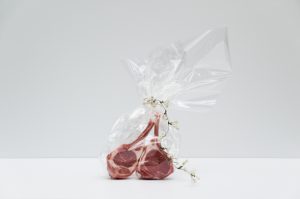Astrid’s work explores storytelling from a personal perspective. Her projects include intimate views of private spaces and reflections on her own history and values. Using keepsakes from family life, old photographs and storytelling elements, she builds a visual world of memory and identity, place and home.
Her photographs have been exhibited in numerous featured and juried exhibitions throughout the US, including shows at Danforth Art Museum, the Griffin Museum of Photography, Sohn Fine Art Gallery in Lenox MA, Lichtenstein Center for the Arts in Pittsfield MA, 555 Gallery, the PRC, and Soho Photo Gallery, New York.
She received a Silver Medal Award in the 2014 San Francisco International Photography Exhibition and was selected as one of the 2015 Top 100 for Review Santa Fe Photo Festival. She is a Photolucida 2015 Critical Mass Top 50 photographer, and winner both of the Soho Photo Gallery’s 2016 International Portfolio Competition and the 2017 Portfolio ShowCase 10 at The Center for Fine Arts Photography, Fort Collins CO. She also was a Finalist for the LensCulture Exposure Awards 2017.

Her photographs have been published online in What Will You Remember, 3200K, Lenscratch, LensCulture, the Cambridge Art Association blog and Echoes of Pop in the New Millennia blogspot. The series Stories from the Kitchen Table is featured on Syracuse University’s Family.Life. Project webpage. The Boston Globe and other print media have also published her work.
Obviously, Astrid is well along the way of establishing herself as a photographer of note. What steps did she take to develop her art and get it noticed?
The answer is a combination of formal and informal training, learning and willingness to put her art to the test in face-to-face critiques and in competitions.
“While working on a project, it is key for me to get critique from peers. I very much value their advice and expertise,” she says.
“Another wonderful way to develop is to attend classes that focus on portfolio development and critique. Among the many possibilities around, I took classes at the Griffin Museum of Photography and Massachusetts College of Art and Design. Along the way, I started to submit my work to competitions and went to some local and national portfolio reviews.
“I also found the Cambridge Art Association to be very helpful for me to establish an exhibition routine. They offered many opportunities for emerging artists and I was able to show my work in competitions and featured group shows.”
But it was the PRC EXPOSURE and a few other competitions that marked a turning point:
“I was very honored that my project Stories from the Kitchen Table was part of PRC’s EXPOSURE 2016, in the Critical Mass Top 50, and selected as a finalist for the LensCulture Exposure Awards in 2017. I think that these competitions helped to open doors.”

When did your artistic career begin and how would you describe yourself as a photographer?
I began my study of photography at the International Center of Photography in New York soon after moving to the United States from Germany. After relocating to the Boston area I continued my studies at the New England School of Photography, DeCordova Museum School, Photography Atelier at Lesley University, and Griffin Museum of Photography.
I hold a degree in chemistry from the Technical University in Braunschweig, Germany. Natural science and photography have similarities, not only based on technical aspects, but also based on the fact that projects in both disciplines often start with a question that needs further exploration. (Astrid also holds a certificate in Arts Administration from New York University.)

What is the primary focus of your photographic work?
I usually start a new photo project with a question in mind that I try to solve through capturing images. I feel that I have achieved my goal when I’ve gained knowledge and personal insight through the creation of a series of photographs.
Right now, my projects have an autobiographical component; they are based on my personal history.
Whose work inspires you?
In photography I admire artists who are able to tell stories with simple structural elements in their images. I very much enjoy exploring stories that reveal ideas through imagery. I’m specifically drawn to the works of conceptual artists like Moyra Davey and Sophie Calle, who exhibited her work Last Seen at the Isabella Stewart Gardner Museum in 2014.
Do you have a mentor or a muse?
I consider my past and my family in Germany as muses, especially for my last project Stories from the Kitchen Table and a new series that I’m working on: night photographs from the German village where I grew up.
What was the Aha moment that sparked your interest in photography?
While growing up, I did not have access to a higher-end camera, only an Agfamatik (pocket) camera. This camera was fun and easy to use and I loved experimenting with it. I still remember taking an image of a landscape in winter through a foggy window when I was 10 years old and the effect it created that went beyond what was there.
What advice would you give a budding photographer?
The best advice that I have been given is: Be patient and concentrate on your art, everything else will fall into place!
What was your motivation for joining the PRC?
I think that it is key for any kind of trade to have a supportive network of peers as well as institutions that function as meeting points where ideas can be exchanged.
I’ve enjoyed viewing many wonderful and inspiring exhibitions over the years at the PRC and took advantage of the member’s critique; that was always a highlight.


